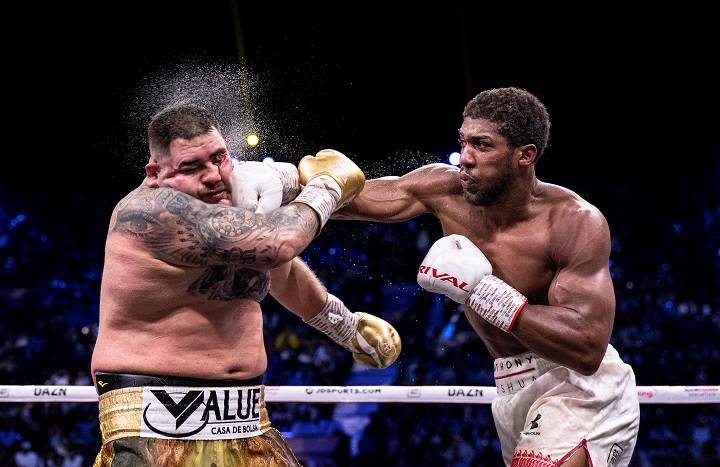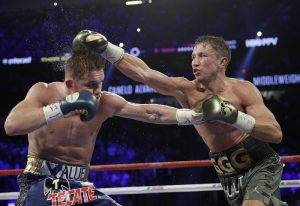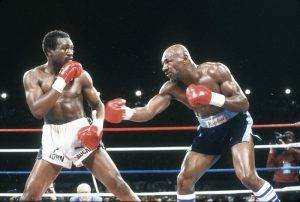In the enthralling world of boxing, where skill, strategy, and sheer determination converge within the squared circle, the duration of a match is as critical as the punches thrown. From the adrenaline-fueled intensity of quick knockouts to the endurance test of lengthy championship bouts, the length of a boxing match contributes significantly to the ebb and flow of the sweet science. In this comprehensive exploration, we dive into the intricacies of how long boxing matches last, dissecting the various formats, historical context, and the unforgettable moments that define the timeless sport.
Understanding the Varied Formats of Boxing Matches
Standard Bout Duration
Rounds and Minutes:
The standard format for professional boxing matches involves a predetermined number of rounds, each lasting three minutes. The number of rounds can vary, with common configurations being 10 rounds for non-title fights and 12 rounds for title fights. The three-minute duration of each round is marked by a balance of tactical maneuvering, offensive flurries, and defensive prowess.
Brief Rest Intervals:
Between rounds, boxers are granted a brief rest interval, typically lasting one minute. During this time, they receive guidance from their corner, recover their breath, and prepare for the upcoming round. The one-minute interlude is a critical period where strategic adjustments are made, and the physical toll of the fight is assessed.
Championship Bouts: Extended Rounds
Title Fights and Twelve Rounds:
Championship bouts, often billed as title fights, extend to a maximum of 12 rounds. The additional rounds amplify the physical and mental challenges faced by the boxers, demanding a higher level of endurance, stamina, and adaptability. Twelve-round title fights are a hallmark of prestigious boxing events, showcasing the pinnacle of the sport.
Decision Outcomes:
The extended duration of championship bouts increases the likelihood of the match going the distance, where the outcome is determined by the judges’ scorecards if neither boxer secures a knockout. The potential for a split decision, unanimous decision, or draw adds an extra layer of intrigue to these longer contests.
Historical Context: Evolving Duration of Boxing Matches
The Transition to Three-Minute Rounds
Historical Evolution:
In the early years of boxing, the standard duration of rounds changed. Initially, rounds lasted an unlimited duration, continuing until one of the fighters was knocked down. However, with the establishment of rules and regulations, the transition to fixed durations occurred.
Three-Minute Rounds Standardized:
The evolution of boxing regulations led to the standardization of three-minute rounds, a format that remains prevalent in modern professional boxing. The shift to this duration was influenced by considerations of both safety and the desire for a structured and regulated sport.
Championship Rounds and the Road to 15 Rounds
15-Round Title Fights: Golden Era of Boxing:
A significant historical development in boxing was the prevalence of 15-round title fights. This era, often referred to as the “golden age” of boxing, saw legendary matchups, including the iconic “Thrilla in Manila” between Muhammad Ali and Joe Frazier. The 15-round format added a layer of drama and spectacle to these monumental encounters.
Transition to 12 Rounds: Safety Considerations:
In the interest of boxer safety, especially following high-profile matches with extended durations, boxing organizations moved towards standardizing championship fights to 12 rounds. This transition aimed to mitigate the physical toll on fighters while preserving the competitive intensity of title bouts.
Strategic Dynamics Within the Ring
Quick Knockouts and Early Dominance
The Art of the Quick Finish:
In contrast to extended bouts, some boxing matches are characterized by quick knockouts. A well-timed and powerful punch can lead to a swift conclusion, with the referee reaching a ten-count and declaring the knocked-down boxer unable to continue. Quick knockouts showcase the explosive power and precision of certain boxers.
Strategic Aggression:
Fighters aiming for early knockouts often employ aggressive tactics, looking to capitalize on openings and vulnerabilities in their opponents. The element of surprise and the ability to exploit weaknesses become crucial components of strategic aggression in the pursuit of swift victories.
Endurance Challenges in Championship Rounds
Navigating the Later Rounds:
In championship bouts that extend to the full 12 rounds, boxers face the challenge of pacing themselves for the long haul. The later rounds demand not only physical endurance but also mental fortitude as fatigue sets in. Managing energy reserves and executing strategic game plans become pivotal elements in navigating the championship rounds.
Late-Round Surges:
Strategic fighters may opt for late-round surges, aiming to make a decisive impact on the judges’ scorecards in the championship rounds. Well-timed flurries of activity, effective counter-punching, and ring control in the closing rounds can sway the perception of the fight.
Notable Moments in Boxing History
“Fight of the Century” – Ali vs. Frazier I (1971)
15 Rounds of Epic Battle:
The first encounter between Muhammad Ali and Joe Frazier, known as the “Fight of the Century,” unfolded over 15 rounds of intense action. Frazier emerged victorious in a unanimous decision, marking a historic chapter in boxing and showcasing the drama and endurance associated with longer bouts.
“Thrilla in Manila” – Ali vs. Frazier III (1975)
The Pinnacle of 15-Round Duels:
The third meeting between Ali and Frazier, the “Thrilla in Manila,” remains one of the most iconic bouts in boxing history. Lasting for 14 rounds, it showcased the physical and mental toll of championship boxing. Ali emerged victorious when Frazier’s corner decided to stop the fight before the 15th round, solidifying the legendary status of this encounter.
Mike Tyson’s Quick Knockouts
Tyson’s Explosive Starts:
Mike Tyson, renowned for his ferocious power, became a symbol of quick knockouts in the heavyweight division. His ability to dispatch opponents in the early rounds contributed to his dominance and the aura of invincibility he held during the peak of his career.
Contemporary Trends and Regulations
Focus on Fighter Safety
Reduced Championship Rounds:
In recent years, there has been a growing emphasis on fighter safety, leading to discussions about further reducing the number of championship rounds. Some voices within the boxing community advocate for 10-round championship fights as a compromise between preserving the sport’s tradition and prioritizing the well-being of the athletes.
Evolution of Regulations:
Boxing organizations continue to evolve their regulations, exploring ways to strike a balance between maintaining the sport’s essence and adapting to contemporary perspectives on safety and competition.
The Influence of Weight Classes
Varied Round Durations:
Different weight classes in boxing may feature varied round durations. While the standard three-minute rounds persist, there are instances where lighter weight classes may adopt shorter durations. This diversity in round lengths accommodates the physical characteristics and fighting styles of athletes across different weight divisions.
The Role of the Referee and Official Decisions
Referee Stoppage and Technical Knockouts (TKOs)
Referee Intervention:
In situations where a boxer is deemed unable to continue or is taking excessive punishment, the referee may intervene and stop the fight. This intervention, known as a technical knockout (TKO), ensures the safety of the participants and prevents unnecessary risks.
Strategic Considerations:
Referee stoppages can have strategic implications, influencing the outcome of the match. Boxers and their corners must be mindful of the potential for stoppages and adjust their approaches accordingly.
Official Scoring and Decision Outcomes
Judges’ Scorecards:
In matches that go the distance, the official decision is determined by the judges’ scorecards. Judges evaluate the performance of each boxer based on criteria such as effective striking, ring control, and defense. The unanimous decision, split decision, majority decision, or draw are possible outcomes.
The Spectacle of a Draw:
A draw, where neither boxer is declared the winner, adds an element of unpredictability to the sport. Draws may lead to rematches, enhancing the narrative and intrigue surrounding certain matchups.
Related Post:
- Mastering the Court: A Comprehensive Guide to Basic Skills in Volleyball
- The Defensive Canvas: A Deep Dive into Strategic Defensive Positions in Football
- Exploring the Positions in Basketball and Their Impact
As the bell tolls and two pugilists step into the ring, the duration of a boxing match becomes a canvas for the artistic expression of skill, resilience, and strategic prowess. Whether it’s the thunderous roar of a quick knockout or the enduring saga of a championship bout that goes the distance, boxing matches captivate audiences with their unique blend of athleticism and theatrics.
From the historical legacy of 15-round title fights to contemporary discussions on fighter safety and regulations, the sweet science continually evolves. Each match, a chapter in the ever-expanding story of boxing, unfolds with its own narrative twists and turns, leaving an indelible mark on the collective memory of fight fans worldwide.
As we witness the drama within the squared circle, the duration of a boxing match remains an integral aspect of its allure. It is in those fleeting minutes and rounds that legends are born, where fighters etch their names into the tapestry of the sport, and the everlasting symphony of the ring plays on, resonating through the pages of boxing history.



